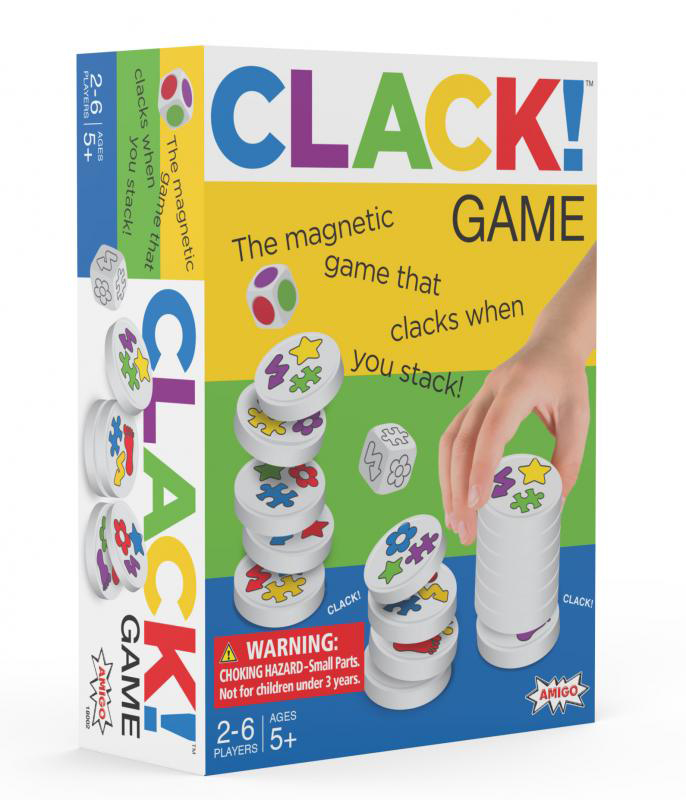 The CLACK! Game, from Amigo, is a two- to six-player game in which players race to match colors and symbols on the dice while building the tallest stack of magnetic discs. (Read the full expert review from Toy Insider editor Jacqueline Cucco.) One of the main reasons this is a great game for children with functioning challenges is that it can benefit fine motor skills, memory, attention, and focus.
The CLACK! Game, from Amigo, is a two- to six-player game in which players race to match colors and symbols on the dice while building the tallest stack of magnetic discs. (Read the full expert review from Toy Insider editor Jacqueline Cucco.) One of the main reasons this is a great game for children with functioning challenges is that it can benefit fine motor skills, memory, attention, and focus.
Fine Motor Skills
When playing, the game pieces are magnetic and “clack” as they stack. (Hence, the game’s name!) Players pick up the pieces by stacking them to the growing tower of discs they’ve already collected. Since the discs are magnetic, when you hold another disc right above one, the magnets will connect, making them “clack” into a stack. Kids need to manipulate the magnets to stack, which provides an opportunity to coordinate movement.
Attending
The game is quick to play. It takes about 10 minutes to play a full game, or less if you’re moving very quickly. So it is a good option for children who have attending issues.
Focus and Processing
To play, kids roll the dice — one features a color and the other features a shape. Once the dice land, players race to collect the discs that have the matching color and symbol on them.
Each disc has a different combination of three shapes on it, including arrows, stars, puzzle pieces, flowers, and feet. The shapes come in five different colors — red, green, yellow, blue, and purple. So if the colored die lands on blue and the shape die lands on feet, players must pick up all the discs featuring blue feet.
It requires the child to pay attention, focus, and process what they are seeing to make the connection. For children with processing delays, this can assist in those functioning skills, too.
Making It Fun, Not Frustrating
Instead of making it a game, caregivers and therapists can set the dice and just ask the child to find the corresponding pieces. It removes the competition aspect that can make the game hectic for some children.
Players can just take turns instead of playing at the same time, so it is not a race to who matches first. Often, this can cause distress in players, so taking that element out makes it less about winning. It then focuses on social skills because players have to take turns, and then wait for their next turn.
There also are wild card and penalty elements to Clack!’s traditional play pattern. Those aspects can either be removed to eliminate the higher level of attending and emotional management they would require, or added back in later (timed or untimed) to challenge the child.
Caregivers and therapists don’t have to keep score. It keeps things light and fun. So everyone can live in the moment and not worry about who’s winning until the very end when everyone compares stacks. It can be a good social group activity as a result. Alternatively, you can just eliminate scoring all together.
Lastly, instead of playing the game, kids can just have fun clacking away to build a tower! Or they can be tasked with building a tower using only the pieces that have flowers on them, or all pieces that are blue. This way, they can work on fine motor and organization skills, and build up to playing the game.
All in all, with all the ways to play, and all the skills that can be practiced, this is a great game for children with functioning challenges.
